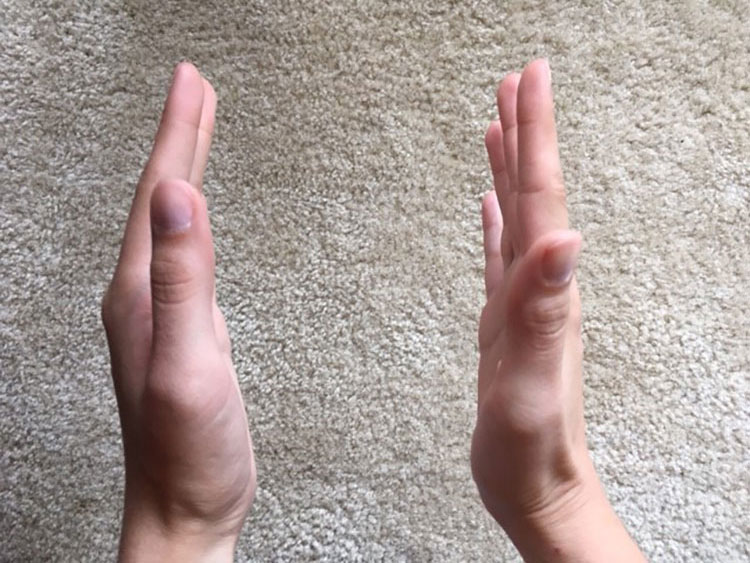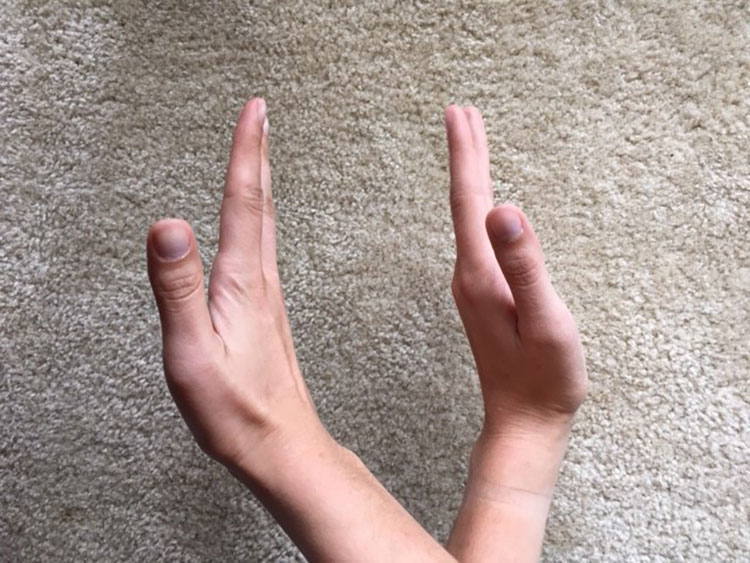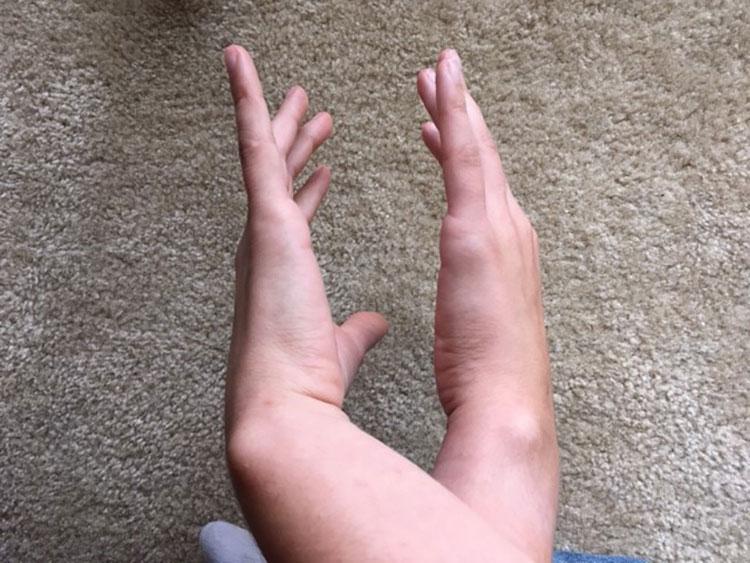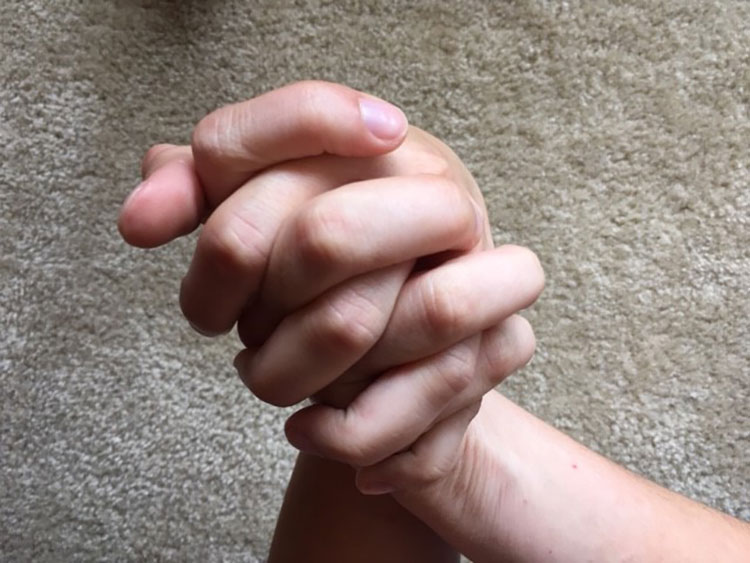Point to Finger Illusion
- Published22 Jan 2021
- Author Lynnie Fein-Schaffer
- Source BrainFacts/SfN

If asked, you could probably wiggle your thumb or pinky finger on demand. But how do you know where exactly your right index finger exists in time and space? Through visual and sensory cues sent to your brain, of course!
Try this simple neuroscience trick and learn how your brain can get confused and sometimes mix up these signals.
Have one person (Person A) stretch their arms out in front with their palms facing each other.

Now, have them cross their arms so the backs of their hands are facing each other.

Flip the hands over so the thumbs are pointing downward, and the palms are facing together once again.

Intertwine the fingers from each hand, bend the elbows, and flip the hands under close to the chest.

Now, have the other person (Person B), point to one of Person A’s fingers and ask them to wiggle it. Did they wiggle the correct finger? Probably not!
Let’s try it another way. Have Person B touch the finger they want Person A to wiggle. Did they move the right one now?
Watch this video below to learn about the science behind this optical trick.
CONTENT PROVIDED BY
BrainFacts/SfN














